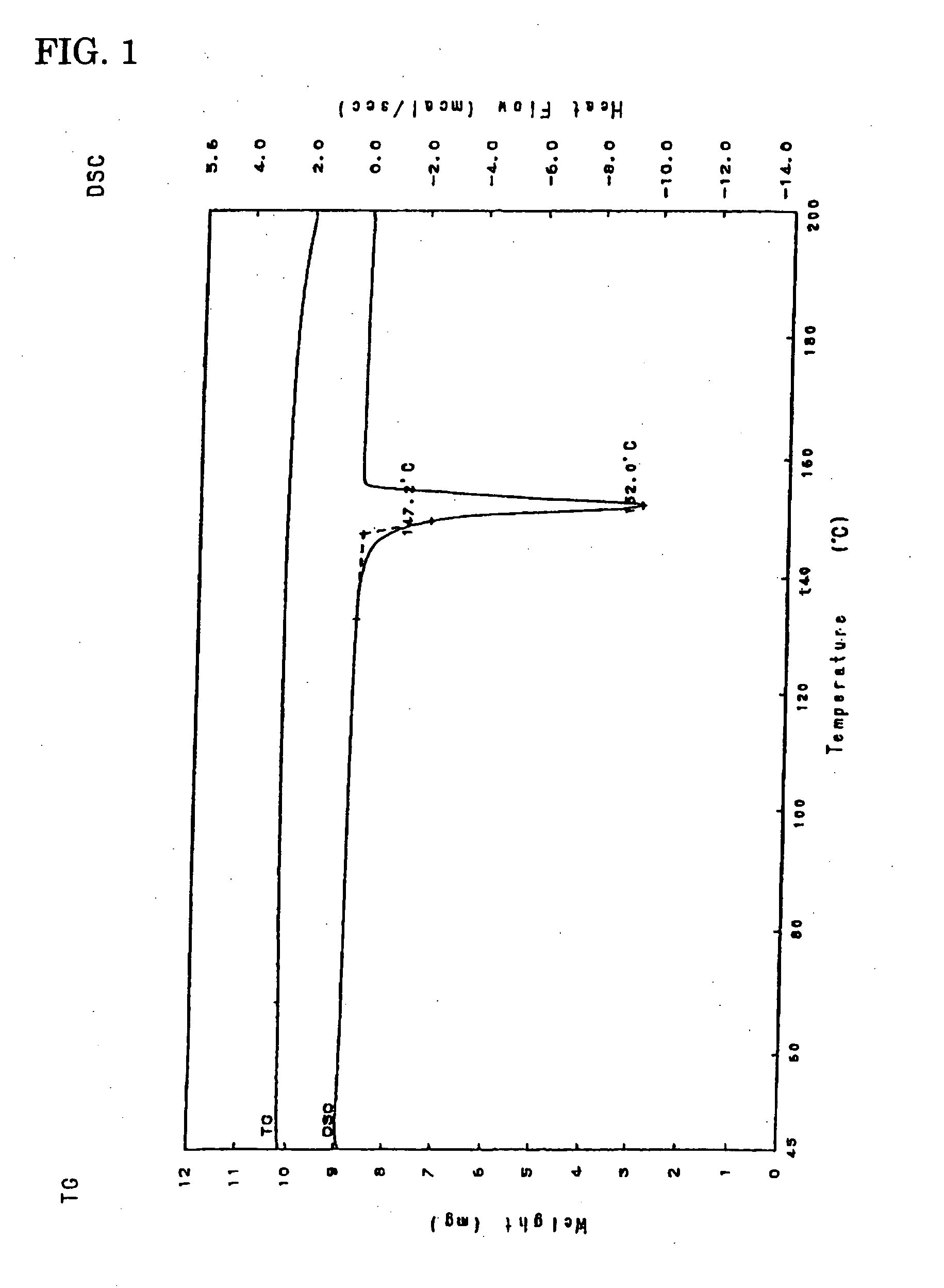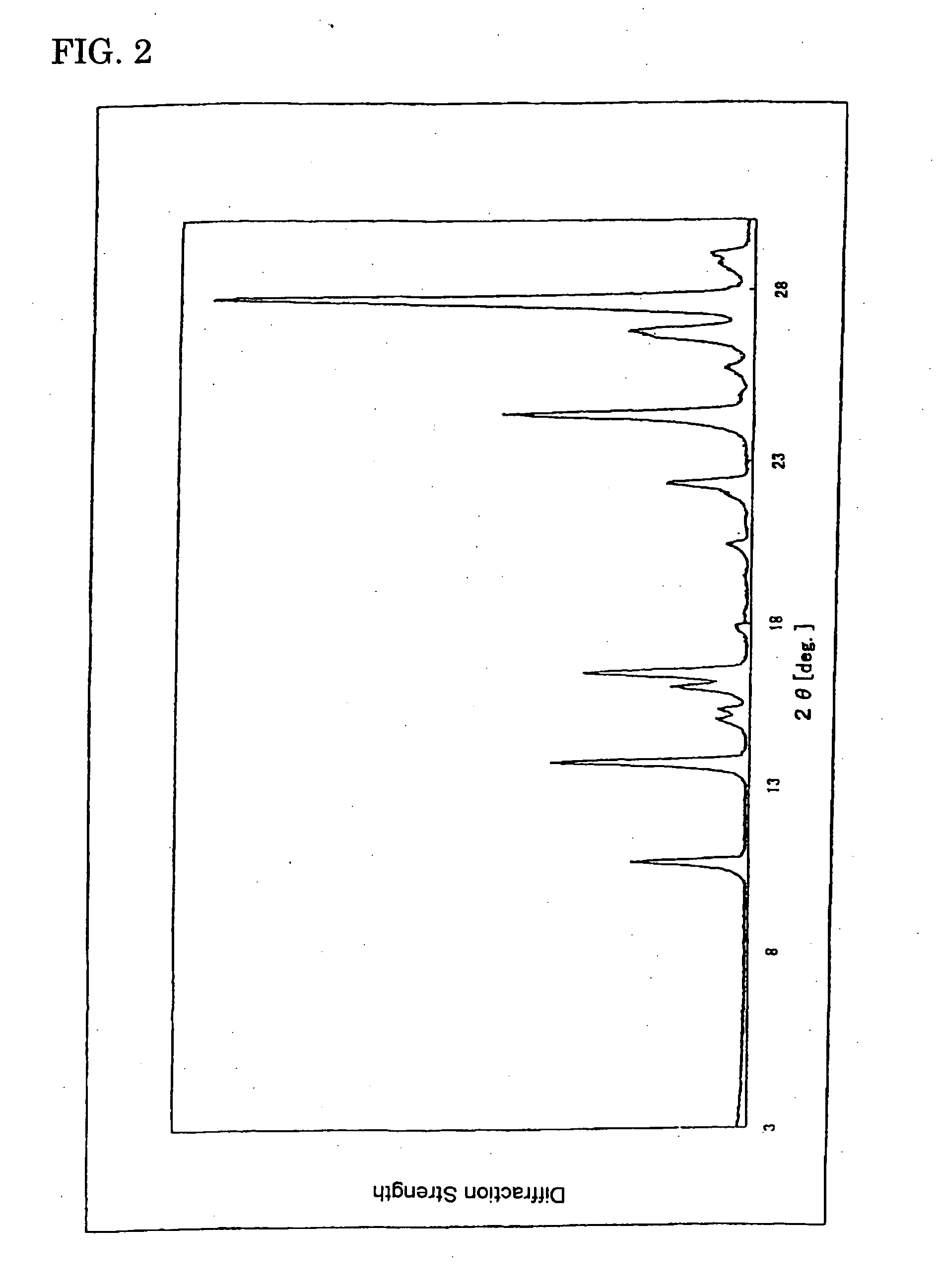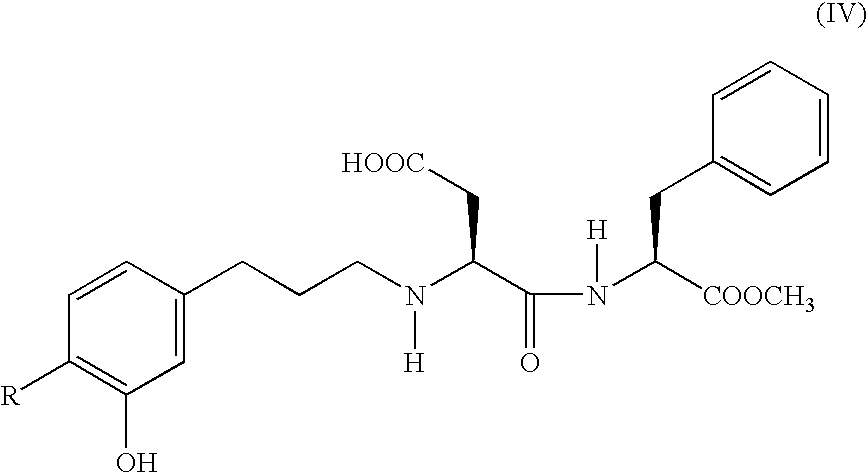Process for producing cinnamaldehyde derivatives, use thereof and the like
a technology of cinnamaldehyde and derivatives, applied in the field of new products, can solve the problems of excessive sugar intake, low yield of aspartame, and disease accompanied by weight gain, and achieve the effect of minimal suppression of second reaction
- Summary
- Abstract
- Description
- Claims
- Application Information
AI Technical Summary
Benefits of technology
Problems solved by technology
Method used
Image
Examples
example 1
Synthesis of (2E)-(3-hydroxy-4-methoxy)cinnamaldehyde
[0066] Isovanillin (121.72 g, 0.8 mol) and sodium hydroxide (320 g, 8 mol) were dissolved in water (2000 ml) at 30° C., and thereafter the mixture was cooled until to −10° C. A 28 wt % of acetaldehyde aqueous solution (290 g, 1.84 mol) was continuously dropped to this alkali solution for 45 hours. The reaction solution at a time when the drop of the acetaldehyde aqueous solution was finished, was determined by a high performance liquid chromatography (HPLC), and as a result the object compound was produced at an yield of 74%. After the drop was finished, the reaction solution was stirred for 1 hour, and thereafter, by adding a 36 wt % of hydrochloric acid (HCl) aqueous solution (768.1 g, 7.78 mol) thereto, the reaction was stopped. The reaction solution thus obtained was filtered to obtain crystals (324 g). The crystals thus obtained were dispersed in a water (500 ml) at 25° C., and thereafter was dissolved therein by adding a 25...
example 2
Physical Properties on (2E)-(3-hydroxy-4-methoxy)cinnamaldehyde
[0067] The physical properties on the title compound obtained in the present invention were in the followings.
[0068] Color: Lemon yellow crystal.
(Differential Thermal Analysis)
[0069] Temperature range for determination: 50 to 200° C., heating-up speed: 5° C. / min., melting point: 147° C. (See FIG. 1.).
(NMR Spectrum)
[0070]1H-NMR (DMSO-d6): : 3.84 (s, 3H), 6.61 (dd, J=7.8, J=15.8, 1H), 7.01 (d, J=8.25, 1H), 7.15 to 7.20 (m, 2H), 7.60 (d, J=15.8), 9.30 (s, 1H), 9.60 (d, J=7.8, 1H).
[0071]13C-NMR (DMSO-d6): :C1150.912, C2114.817, C3122.056, C4127.150, C5112.207, C6146.959, C7153.898, C8126.339, C9194.189, C1055.847.
(Powder X-Ray Diffraction)
[0072] Characteristic peaks of diffractive X-ray were shown in diffraction angles of 13.75°, 16.53°, 24.43° and 27.75° (2, CuK ray) (See FIG. 2.).
[0073] From the above, in the present invention, a crystal of (2E)-(3-hydroxy-4-methoxy)cinnamaldehyde having a purity of at least 9...
example 3
Synthesis of 3-(3-hydroxy-4-methoxyphenyl)propionaldehyde
[0074] (2E)-(3-hydroxy-4-methoxy)cinnamaldehyde (5.00 g, 0.028 mol) and 5% palladium on alumina (300 mg) were added to methanol (80 ml), and the mixture was stirred for reaction under an atmosphere of mixed gas of nitrogen-hydrogen of ordinary pressure (0.1 MPa) at 35° for 24 hours. The catalyst was removed from the reaction solution by filtering, and further, was washed with methanol (10 ml). The methanol solution obtained was determined quantitatively by a high performance liquid chromatography (HPLC), and as a result 3-(3-hydroxy-4-methoxyphenyl)propionaldehyde (4.38 g, 0.024 mol, yield: 87%) was produced.
PUM
| Property | Measurement | Unit |
|---|---|---|
| temperature | aaaaa | aaaaa |
| melting point | aaaaa | aaaaa |
| melting point | aaaaa | aaaaa |
Abstract
Description
Claims
Application Information
 Login to View More
Login to View More - R&D
- Intellectual Property
- Life Sciences
- Materials
- Tech Scout
- Unparalleled Data Quality
- Higher Quality Content
- 60% Fewer Hallucinations
Browse by: Latest US Patents, China's latest patents, Technical Efficacy Thesaurus, Application Domain, Technology Topic, Popular Technical Reports.
© 2025 PatSnap. All rights reserved.Legal|Privacy policy|Modern Slavery Act Transparency Statement|Sitemap|About US| Contact US: help@patsnap.com



